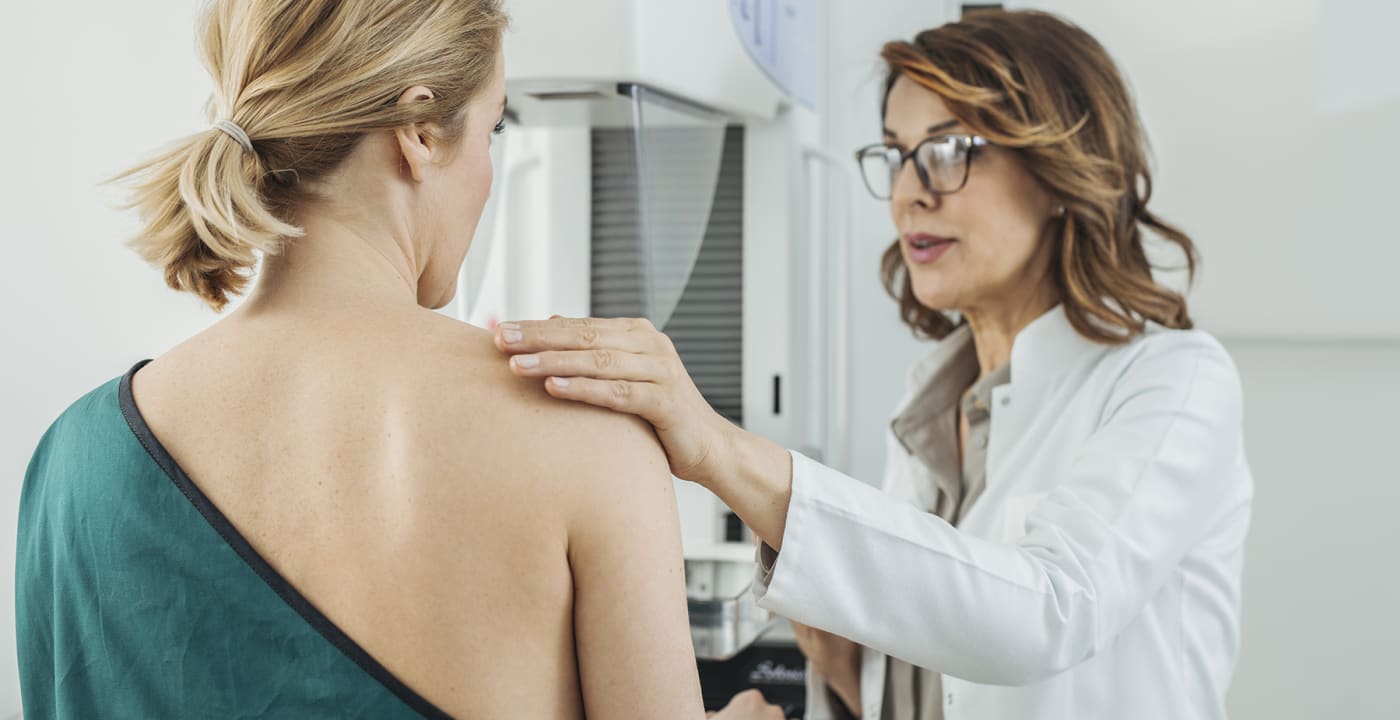What does it mean to have ‘dense’ breasts and how does it affect mammogram findings?

At a glance
- About half of all women have dense breasts, and only a mammogram can show this
- Having dense breasts means you have more glandular and fibrous tissue than fatty tissue
- Talk to your provider about your breast density and other cancer risk factors such as family history
If you’ve had a mammogram in recent years, you may have been told that you have dense breasts. Both Washington state and the U.S. Food and Drug Administration require radiologists to share information about breast density in mammogram findings. Why?
Approximately half of all women have dense breasts, which is a risk factor for breast cancer. Knowing whether you have dense breasts can help you make informed choices about your health and what kinds of screenings options to pursue.
What are ‘dense’ breasts?
The female breast consists of three types of tissue: fibrous, glandular and fatty. Having dense breasts means you have more glandular and fibrous tissue compared to fatty tissue. (Breast size is not a factor.)
“Unfortunately, dense breasts can make abnormalities and tumors more difficult to detect with mammography on its own,” says Kristi Martin, professional outreach director and former imaging provider liaison at MultiCare.
Since it’s not possible to know breast density just by looking in the mirror — only a mammogram can show you — it’s best to talk to your medical provider about your breast density and other cancer risk factors such as family history. From there, you can decide whether a mammogram makes the most sense, and when.
“Patients should discuss their health concerns or questions with their doctor to decide on a plan that meets their specific health needs,” Martin says.
According to the American Cancer Society, women should start discussing mammography with their doctor or other health care provider at age 40. Women ages 45-54 should get mammograms every year. At age 55, women can choose to get a mammogram every two years or continue yearly screening.
Though women should be aware of how their breasts typically look and feel, the American Cancer Society no longer recommends clinical breast exams or breast self-exams as part of routine care in their breast cancer screening guidelines.
Types of mammograms
A mammogram is a low-dose X-ray that can detect breast cancer. Using two plates to compress the breast, images are taken from two different angles.
A newer type of mammography, 3D mammography (also called breast tomosynthesis), may allow providers to see breast tissue more clearly and reduce the chance for the patient to need additional exams. The breast is compressed, as in a traditional mammogram, but many low-dose X-rays are taken to create a three-dimensional picture.
At MultiCare and in general, 3D mammograms are the standard for detecting breast cancer. If you have a choice of traditional (2D) and 3D, go with 3D.
“Mammography remains the best first test to detect breast cancer in almost all cases, regardless of breast density,” says Nils Nankin, MD, a radiologist with MultiCare.
It’s important to note that having dense breasts is only one of many risk factors for breast cancer.
“Several other factors are taken into account when determining if additional testing (to supplement mammography) is appropriate, such as personal and family history of breast cancer, genetic mutations and previous history of radiation exposure,” Dr. Nankin says.
Editor’s note: This article was originally published May 2019 and updated October 2022.
What's next
- Schedule a mammogram appointment near you
- Learn more about your risk of developing breast cancer with our Breast Cancer Risk Assessment
- What happens during a mammogram?



